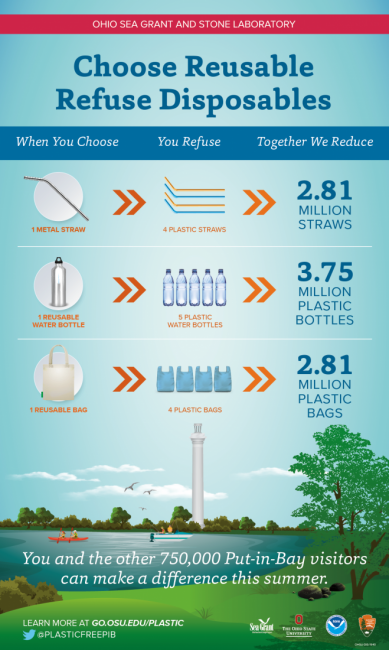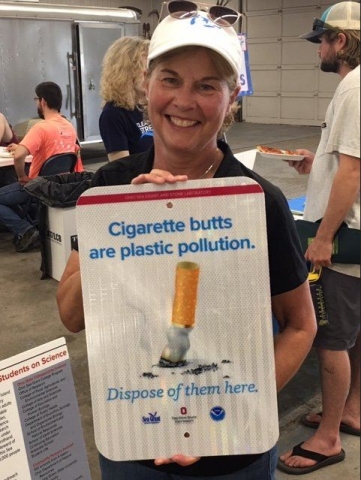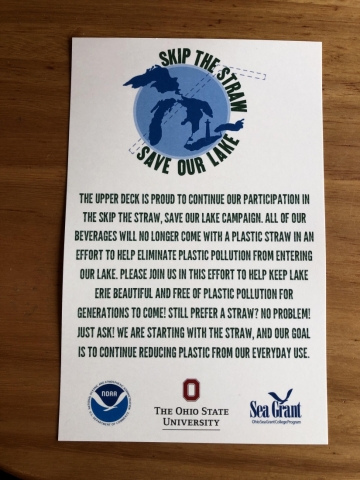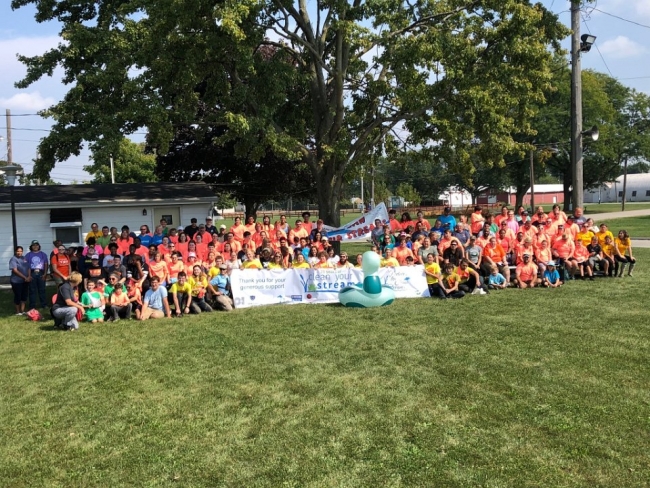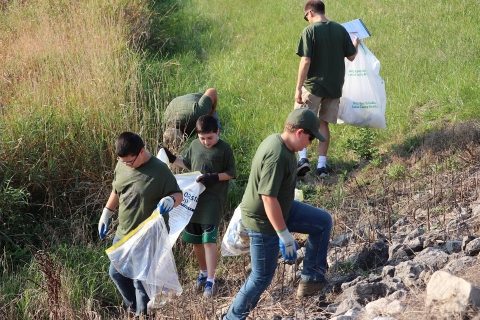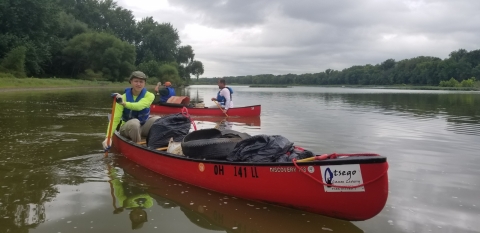The NOAA Marine Debris Program (MDP) Great Lakes Region spans eight states from Minnesota to New York, covers the north coast, and forms a water boundary between the United States and our Canadian friends to the North. With 10,200 miles of coastline (roughly half in the U.S. and half in Canada), the region has the second largest coastline in the United States, behind Alaska.
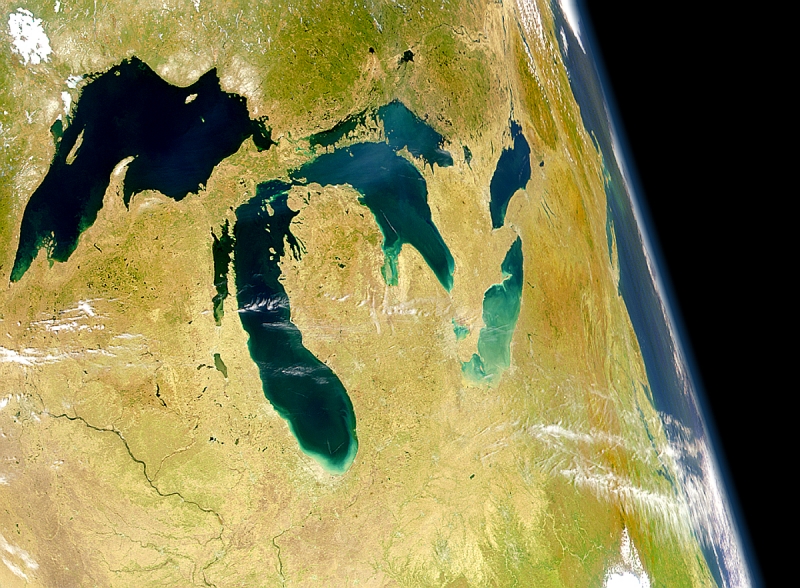
Unfortunately, the Great Lakes have had their fair share of environmental problems, including marine debris. Similar to the ocean, debris in the Great Lakes ranges from tiny microplastics to large abandoned and derelict vessels. Thankfully, dedicated partners around the region are working to address debris through research, removal, and prevention efforts.
With the support of a NOAA Marine Debris Prevention Grant, The Ohio State University and Ohio Sea Grant, along with numerous community partners, are tackling marine debris prevention with visitors to South Bass Island and the village of Put-in-Bay, Ohio. More than 800,000 people visit South Bass Island every year, which can generate a significant amount of marine debris around the island and in Lake Erie. During the first year of the project, the team launched a skip-the-straw campaign with the Boardwalk Family of Restaurants and developed marine debris signage to encourage visitors to choose reusable over single-use items, as well as dispose of single-use items properly. Ten cleanups were also completed, removing approximately 267 pounds of debris from the area. Work will continue for another year, through the 2020 summer season!
Partners for Clean Streams (PCS), through the support of a NOAA Marine Debris Removal Grant, is working with community partners and volunteers to remove marine debris from the Maumee River and other tributaries and rivers in the greater Toledo, Ohio area. The Maumee River and Maumee Bay in Lake Erie are home to valuable habitat for important recreational and commercial fish species, such as walleye, white bass, and yellow perch. By removing debris, this project is preventing negative impacts to these valuable fishery habitats. To date, the project team and 1,133 volunteers have removed 22,795 pounds of marine debris (of which 4,040 pounds have been recycled) along 44.17 miles of rivers in the area. PCS has also conducted marine debris education and prevention through their partnership with the Glass City Marathon by recycling hydration and energy packs, cardboard, and plastics. The historically high water levels in the Great Lakes have caused some delays, but the project team is still planning additional cleanups this year.
Working with volunteers and the community is also a key part of Buffalo Niagara Waterkeeper’s efforts in New York. With the support of a NOAA Marine Debris Removal Grant, Buffalo Niagara Waterkeeper will lead volunteer marine debris removal efforts in the Niagara River/Lake Erie watershed, and work with the City of Buffalo’s refugee fishing community to prevent recreational fishing debris. Learn more about this project from the grantee later this week through a guest blog!
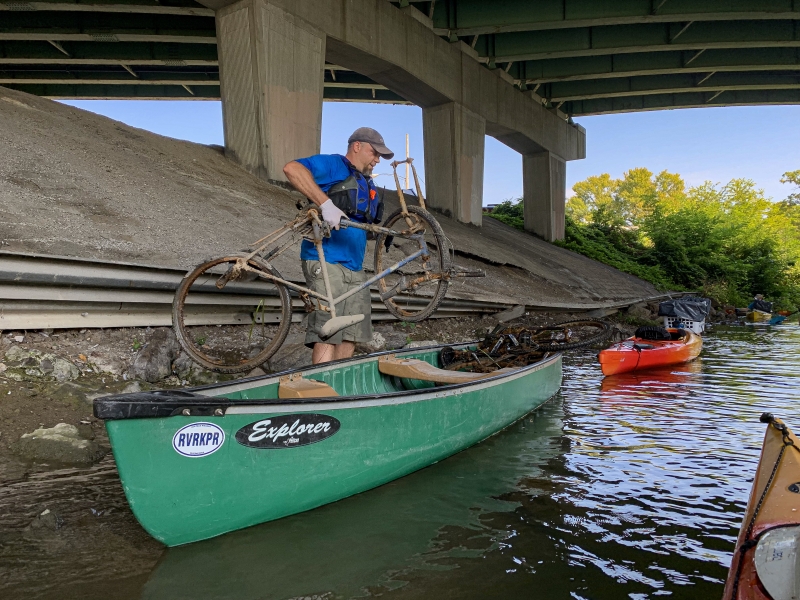
Last, but certainly not least, partners around the region and on both sides of the border have been working diligently over the past few years on completing a regional action plan. The 2014-2019 Great Lakes Land-based Marine Debris Action Plan wrapped up its fifth and final year this past May. Through collaborative efforts, the Great Lakes marine debris community made great strides to address marine debris, completing 34 actions and continuing work on 17 additional actions. In total, 180,062 people were educated on the topic during 711 events and approximately 306,665 pounds of debris were removed by volunteers. But our work continues! Using feedback from the previous plan, a new 2020 Action Plan was drafted at a workshop facilitated by the NOAA MDP on August 28-29, 2019 at the Toledo Zoo & Aquarium in Ohio. Stay tuned to hear more about this new action plan this week.
All of this amazing work is being accomplished by fabulous partners who are committed to tackling the issue of marine debris. We are proud to be a part of keeping the Great Lakes free of debris!

